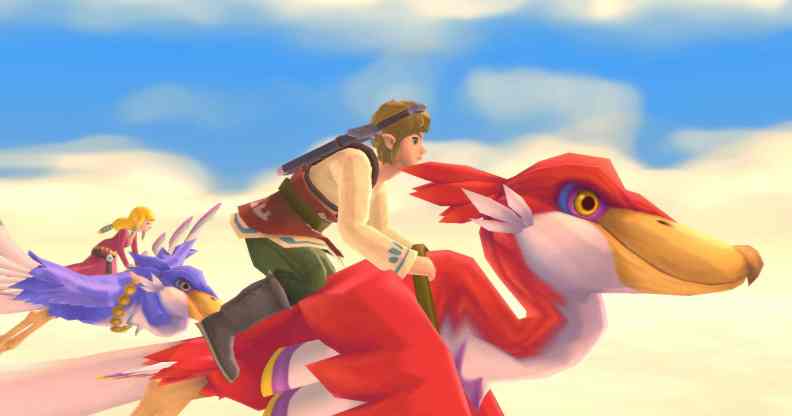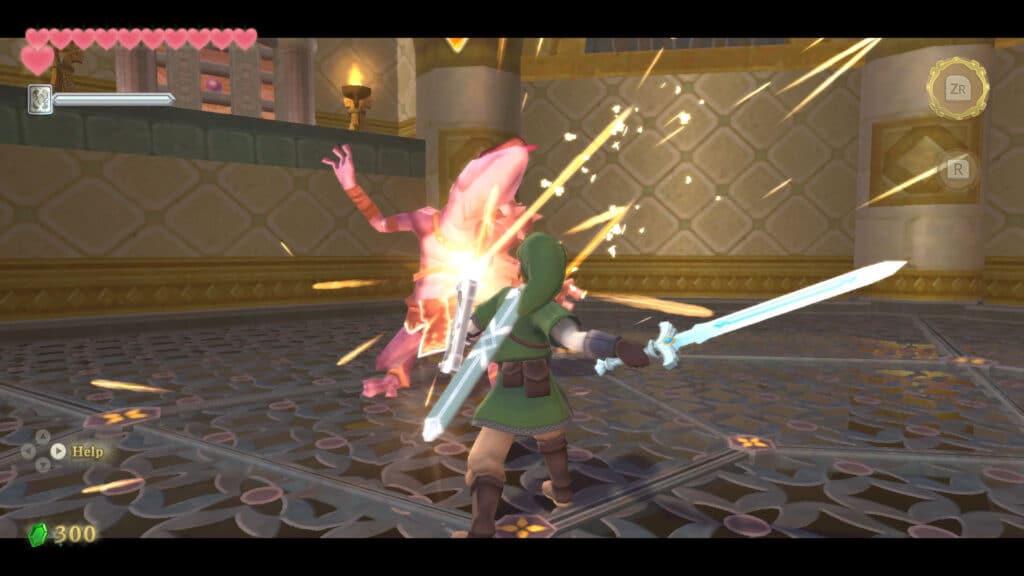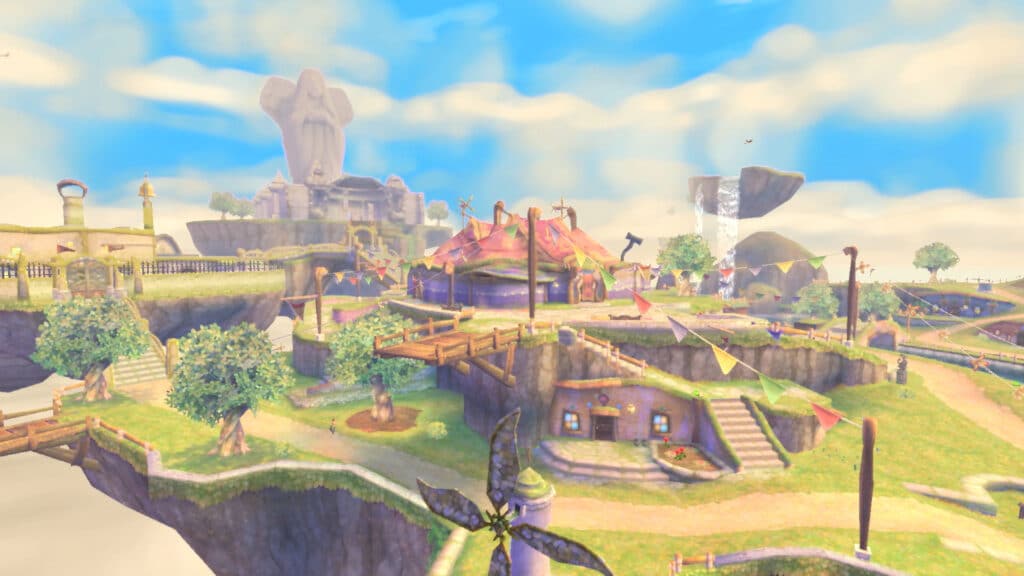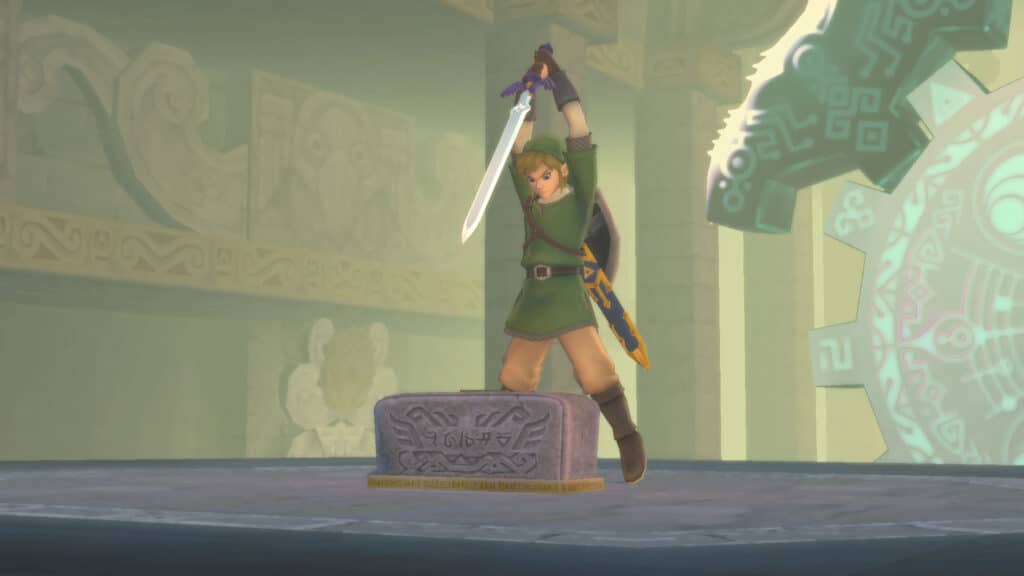The Legend of Zelda: Skyward Sword on Switch is a workout for your wrists and your patience

The Legend of Zelda: Skyward Sword. (Nintendo)
Everyone deserves a second chance, right? Even Skyward Sword.
It’s the most divisive game in the Zelda series, for its motion controls and more experimental gameplay. Now, with this HD re-release on Switch, it’s given a new lease of life. But has it improved with age?
Yes…and no. When it was originally released on the Wii, Skyward Sword was considered a step away from the traditional Zelda formula. In retrospect, it pales in comparison to the broader changes made in Breath of the Wild, but there are still elements that deserve appreciation.
The biggest gripe still remains though: motion controls. Devised to show off the capabilities of the Wii Remote, motion controls offered an immersive take on combat, with sword swinging and weapon aiming as well as various other gestures. But rather than immersing you in your quest, frustrations with tracking gestures took you out of the magic.
That is still the case on the Switch. The Joy-Con controllers have difficulty matching your gestures in-game, with near constant pressing of the Y button required to re-centre the gyro. At best the aiming is shaky; at worst Link swings wildly in the opposite direction to his doom. What works in theory is, in practice, infuriating. There’s nothing worse in gaming than a disconnect between your mind and the actions in-game.

The Legend of Zelda: Skyward Sword. (Nintendo)
Take sword combat. On paper, swinging or flicking the controller in different directions seems intuitive. But it’s unable to differentiate between swinging to the right and moving your arm or wrist to the right in preparation to swing left. Thrusting, meanwhile, feels impossible at times. And when so many enemies rely on accuracy to defeat them, motion controls are simply too imprecise and too unreliable.
There are places where they do work: spinning keys to open boss doors, or flicking your wrist to whip at switches. But Breath of the Wild’s subtly integrated use of gyro aiming just… works. Here the controls feel fussy and time consuming when a button press would do the trick.
It’s now possible to play solely with button controls – in fact, if you’re playing in handheld mode or a Switch Lite it’s the only way to play. But they’re far from ideal. The right stick is used to mimic motion controls, be it sword swings or bomb throwing arcs. In some cases this feels easier to the point of cheating, in others it’s far from intuitive and requires more button and stick actions than it should.
What’s more, with motion controls the right stick is used to control the new and integral free-roaming camera. With button controls you cannot swing the sword and move the camera at the same time.
The new camera is one of many quality of life improvements that certainly improve on the original. Fi, your magical companion, no longer interrupts every five minutes; item descriptions no longer display each time you collect them; the lengthy and laborious opening hours have been cut back and an autosave feature has been added.

The Legend of Zelda: Skyward Sword. (Nintendo)
And, of course, there are improvements to the graphics. Skyward Sword undoubtedly looks sharper than it did before. But, like the motion controls, the impressionist art style is divisive. Originally designed to hide the underpowered capabilities of the Wii, the soft blurry watercolour wash seems more pronounced in HD. At times it looks beautiful, with some lovely lighting and an expressive character model for Link; at others the low quality textures feel dated.
Any small improvements cannot hide the more glaring errors in judgement. In moving away from the Zelda formula, Nintendo added plenty of gameplay between the traditional dungeons. Sadly, most of this involves fetch quests, laborious collections, and tiresome stealth. The world has so much potential, but too often the way you interact feels uninspired.
It’s also incredibly repetitive, with only a handful of areas to explore and repeated gameplay ideas – not to mention the empty sky overworld – that sap the energy and grandeur from your quest. That goes for repeated enemy designs and bosses: looking at you, toe monster.
What’s most infuriating about Skyward Sword is how inconsistent it is. Despite its flaws, there are major highs. The orchestral score is glorious. The dungeon designs rank among the series’ best. And there’s a colourful playfulness to it all that exudes that warm fuzzy Nintendo magic. Ignoring gameplay twists, this is classic Zelda.

The Legend of Zelda: Skyward Sword. (Nintendo)
Its story is also one of the most memorable in the series, exploring the origins of Link’s Master Sword. There are hints of romance between its familiar characters: the shy, awkward teen Link and the bossy Zelda with her own tale to tell. Then there’s villain Ghirahim who wonderfully radiates queer energy.
Skyword Sword remains an essential game for Zelda fans. In particular, the latest trailer for the Breath of the Wild sequel appears to link back to this title, no doubt a key reason Nintendo chose to re-release Skyword Sword above other, beloved games from the series.
Yet it’s as messy and loveable as it’s ever been, a workout for your wrists as much as your patience.
3 / 5
The Legend of Zelda: Skyward Sword is released on 16 July on Nintendo Switch.

